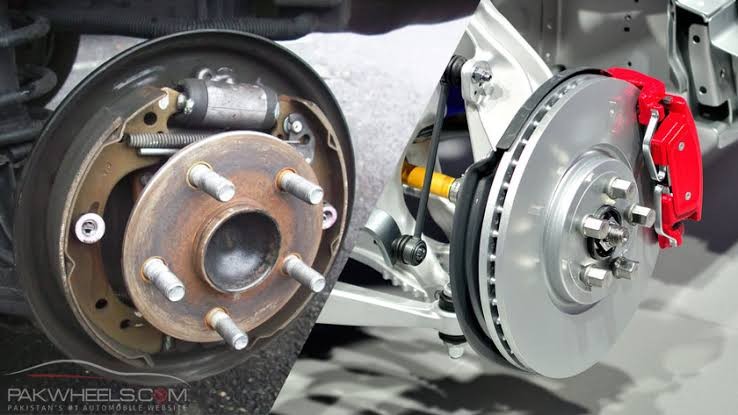Explore why front wheels feature disc brakes for superior performance, while rear wheels use cost-effective drum brakes, striking a balance between stopping power and efficiency in vehicle design.
As automotive technology has evolved, so too have the components that make up a vehicle's braking system. One key decision that automakers face is whether to equip a car with disc brakes in the front and drum brakes in the rear, or to opt for an alternative configuration. This article delves into the reasons behind this common choice, exploring the functional differences, advantages, and considerations of disc and drum brakes in the front and rear of vehicles.
Disc Brakes in the Front:
Disc brakes are commonly found in the front wheels of vehicles due to their superior braking performance and heat dissipation capabilities. A disc brake system consists of a rotor attached to the wheel hub and a caliper that houses brake pads. When the brake pedal is pressed, hydraulic pressure forces the brake pads onto the rotor, creating friction and slowing down the vehicle. This setup offers several advantages:
- Enhanced Heat Dissipation: Front brakes handle a larger portion of the braking load, generating more heat. Disc brakes are better equipped to dissipate this heat quickly, preventing brake fade during prolonged braking.
- Improved Stopping Power: Disc brakes provide consistent and reliable stopping power, making them ideal for emergency braking situations.
- Better Wet Weather Performance: Disc brakes are less prone to water buildup and offer more consistent performance in wet conditions.
Drum Brakes in the Rear:
Drum brakes are often chosen for rear wheels due to their cost-effectiveness and sufficient braking capabilities under normal driving conditions. A drum brake system consists of a brake drum that rotates with the wheel and brake shoes positioned inside the drum.
When the brake pedal is engaged, the brake shoes are pushed against the inner surface of the drum, creating friction and slowing down the vehicle. Here's why drum brakes are commonly used in the rear:
- Cost Efficiency: Drum brakes are simpler in design and construction, making them more cost-effective to produce and maintain compared to disc brakes.
- Parking Brake Functionality: Many drum brake systems also serve as parking brakes, simplifying the design and reducing component redundancy.
- Adequate Braking for Rear Wheels: The majority of a vehicle's braking force is exerted on the front wheels, so drum brakes in the rear provide sufficient braking power for typical driving scenarios.
Considerations and Future Trends:
While the choice of disc brakes in the front and drum brakes in the rear is widespread, advancements in technology and safety standards have led to the emergence of alternative braking configurations. Some high-performance vehicles and modern SUVs are now equipped with disc brakes on all four wheels for consistent performance and safety. Additionally, electronic stability control systems and other advanced driver assistance features are reshaping the way braking systems are designed and integrated into vehicles.
In conclusion, the choice between disc brakes in the front and drum brakes in the rear is based on a combination of factors including braking performance, cost, and vehicle design. This configuration strikes a balance between superior stopping power and cost efficiency, catering to the diverse needs of drivers while maintaining safety and reliability standards. As automotive technology continues to evolve, it's fascinating to see how braking systems adapt to new challenges and requirements.

Comments (0)
Please login to join the discussion
Be the first to comment on this article!
Share your thoughts and start the discussion